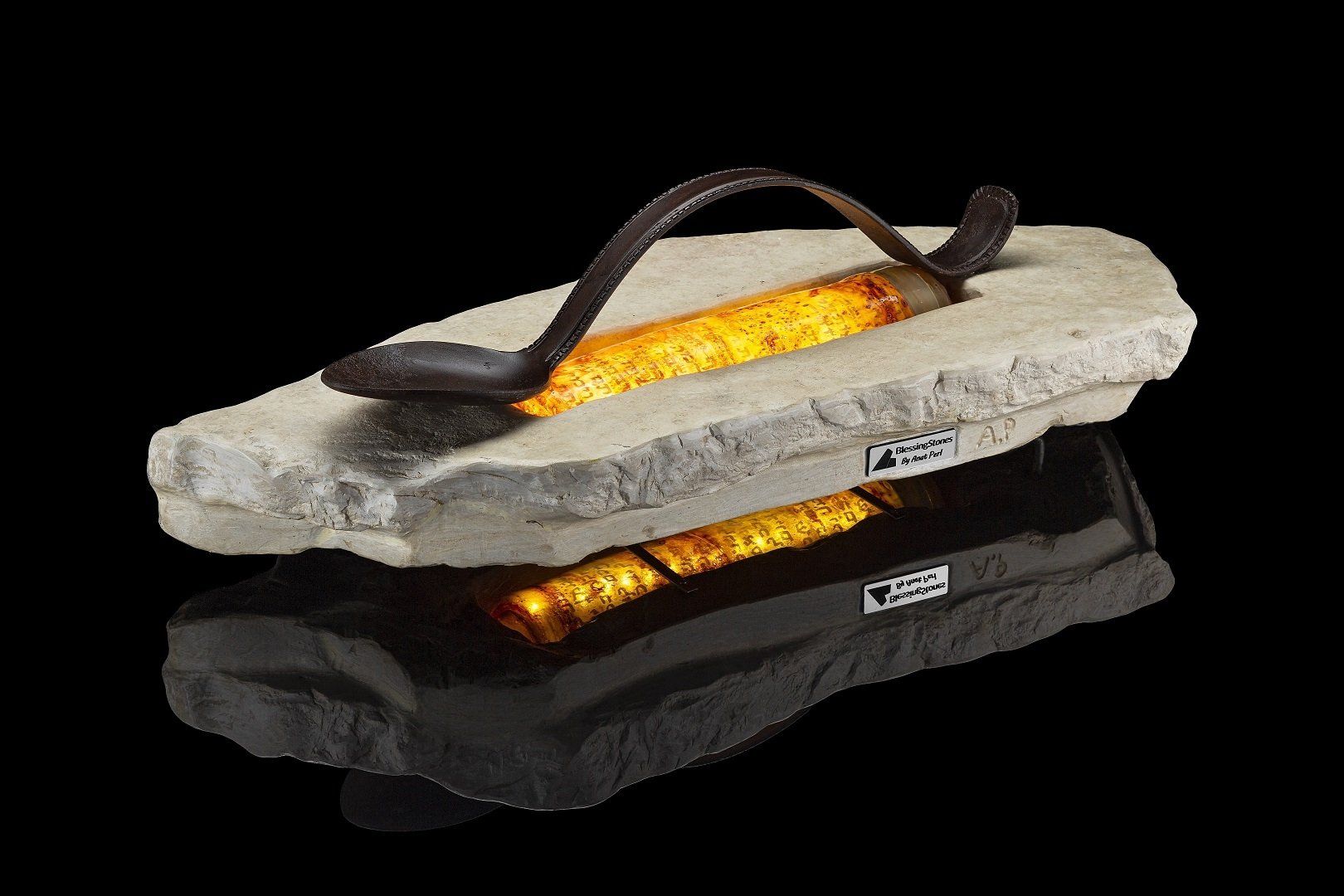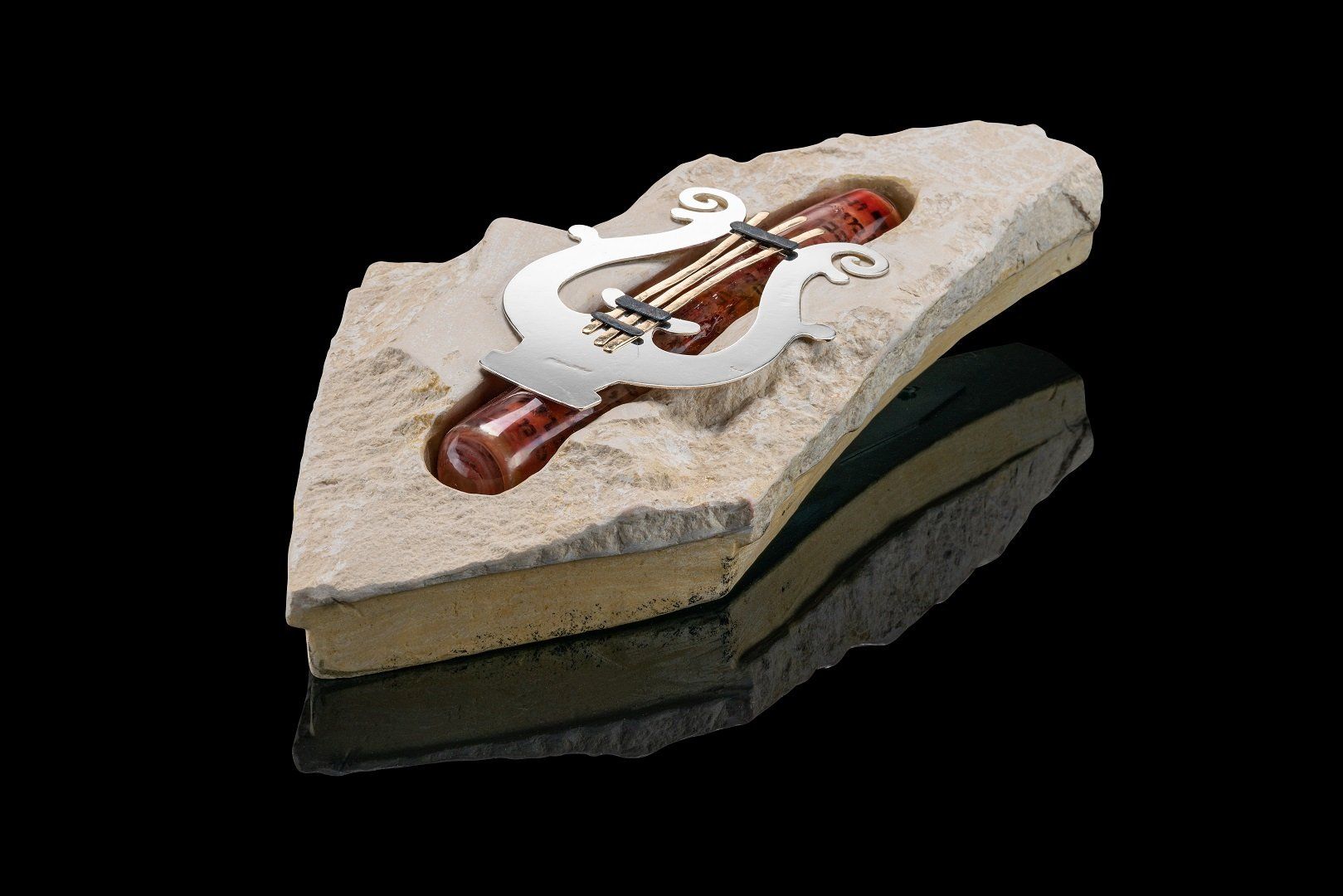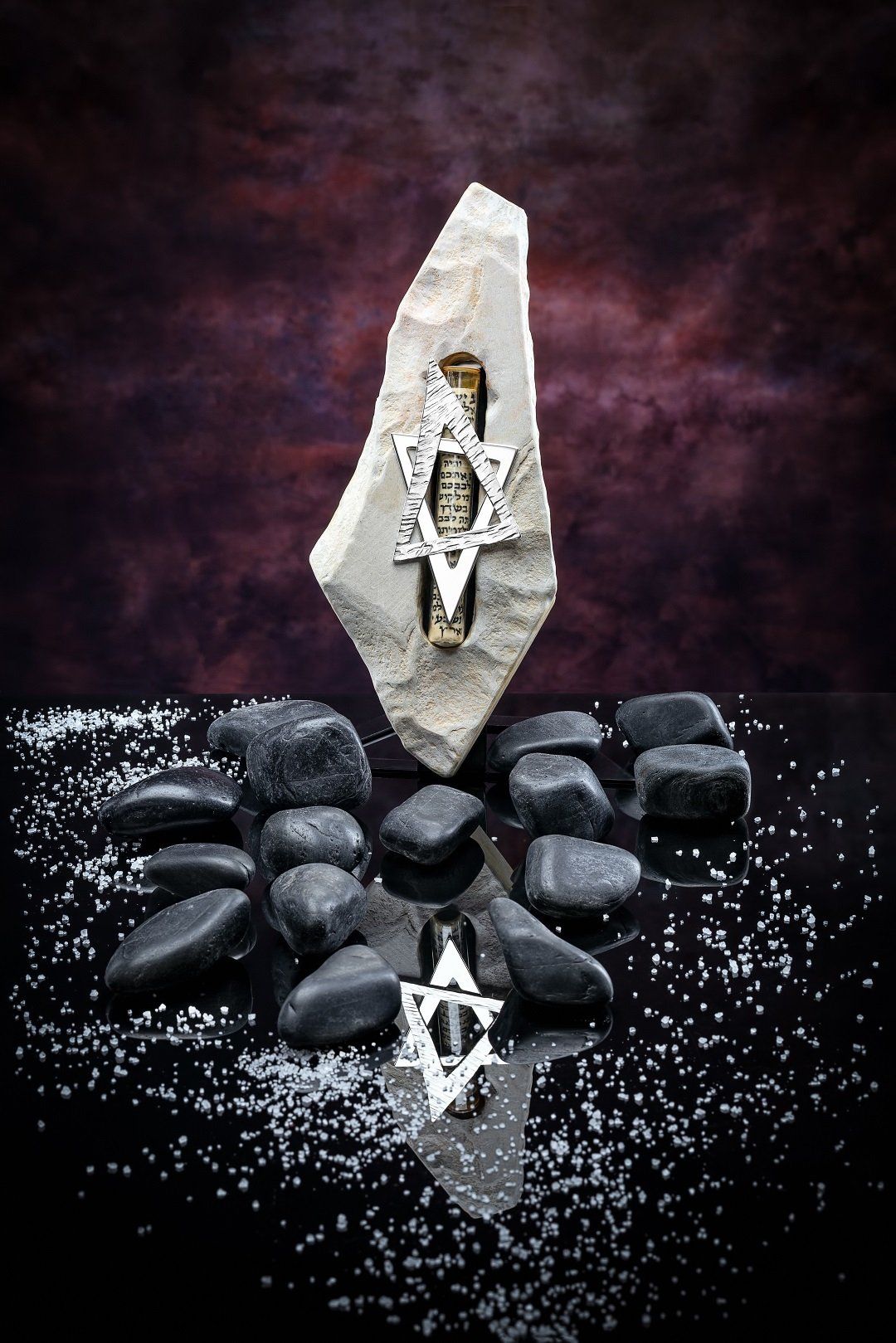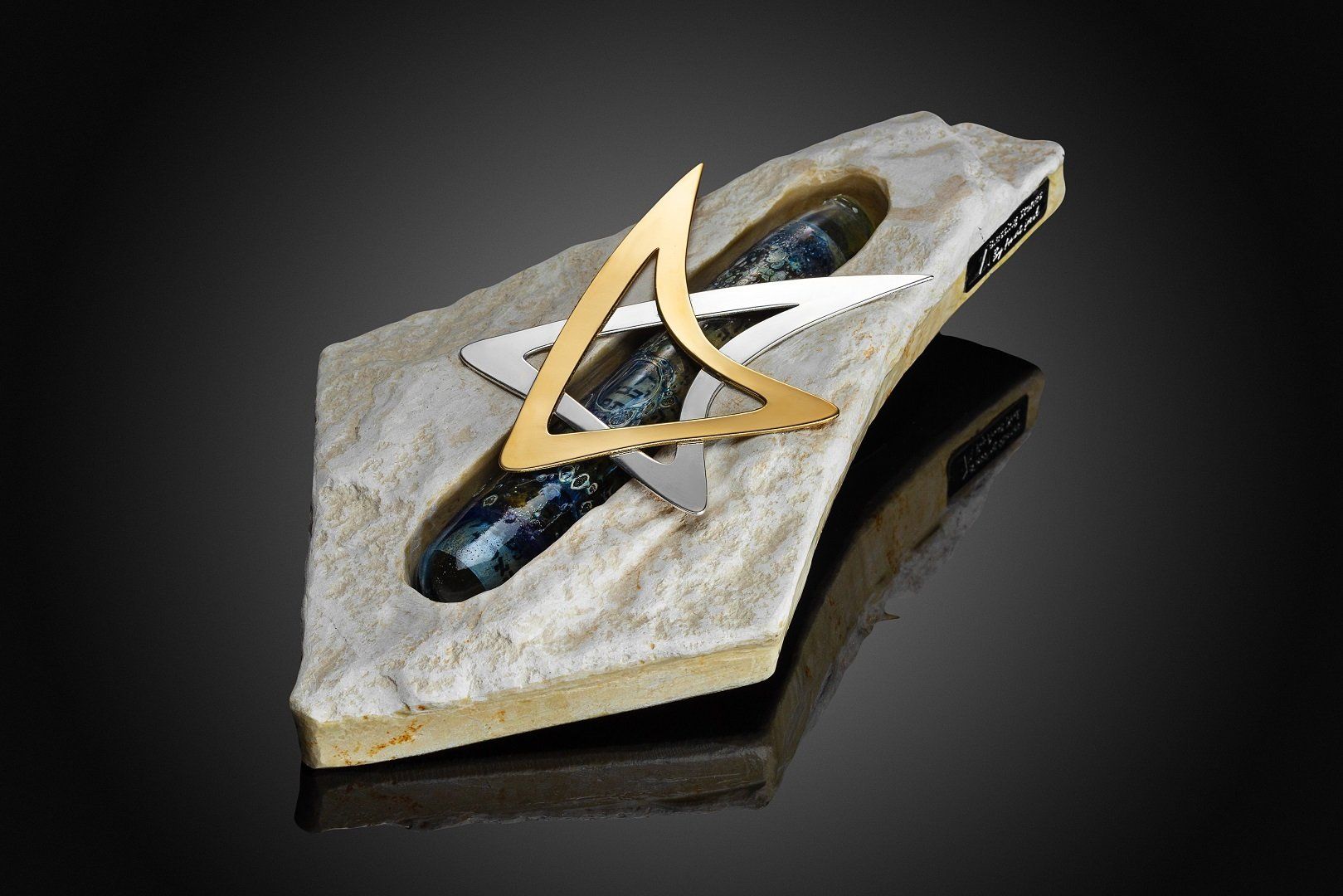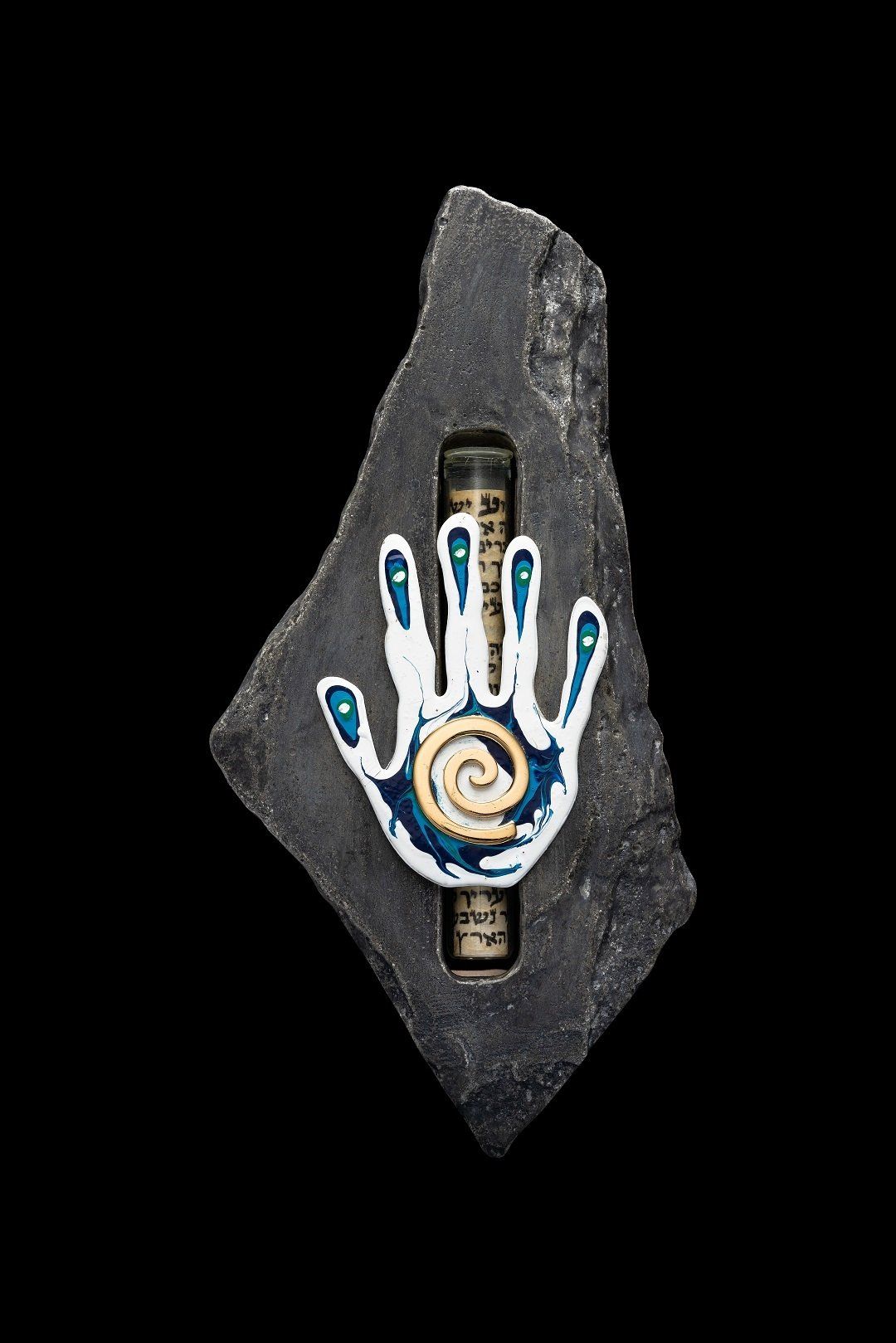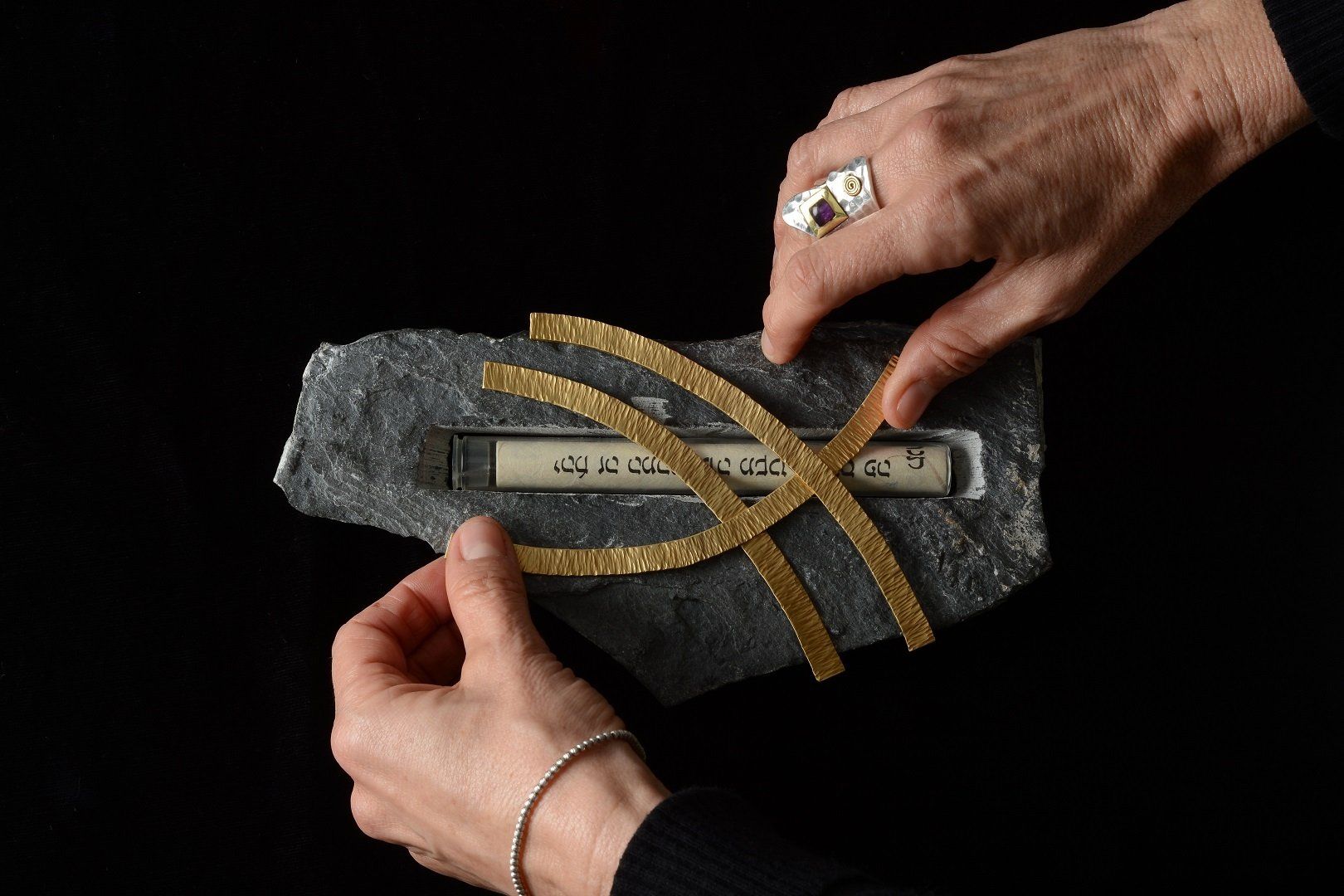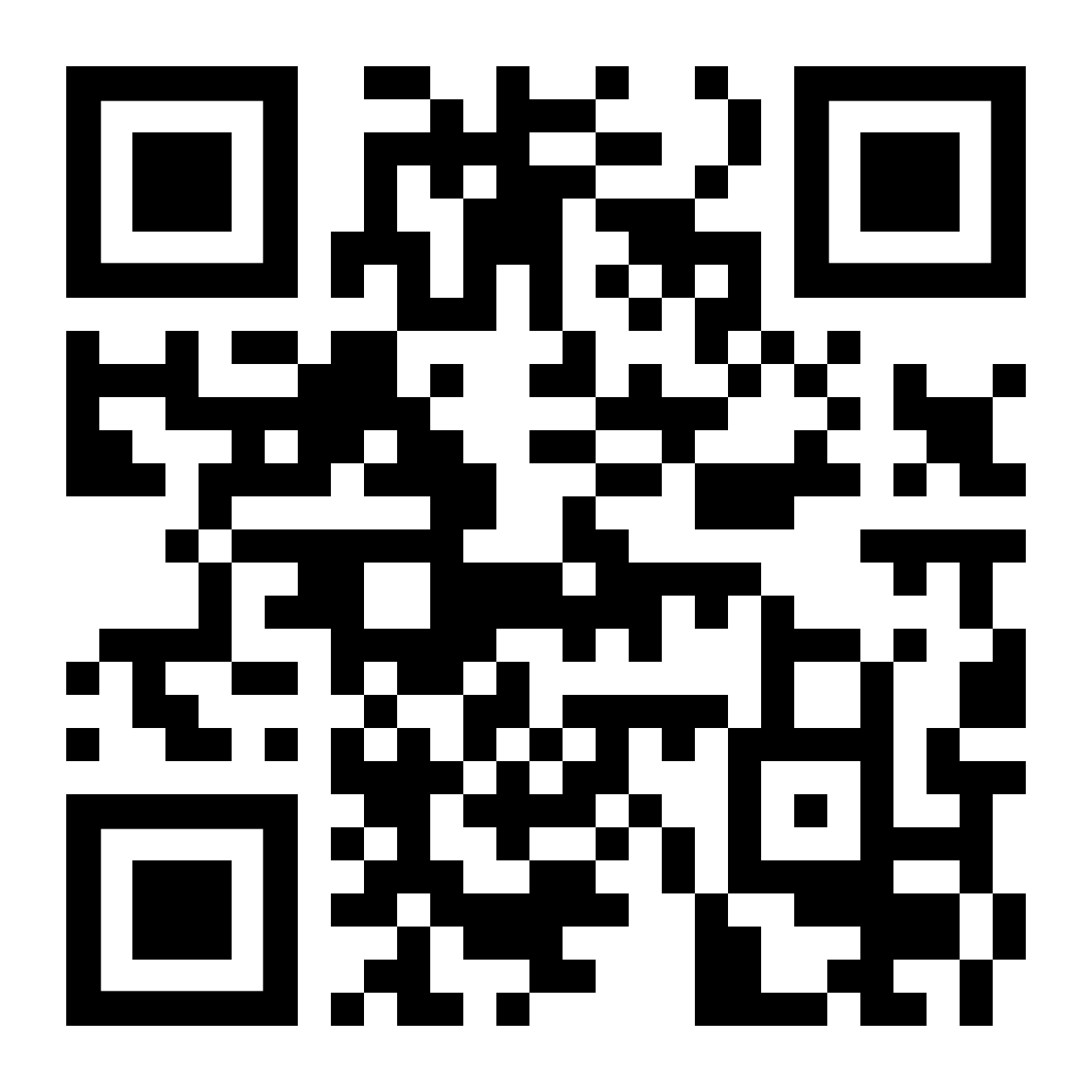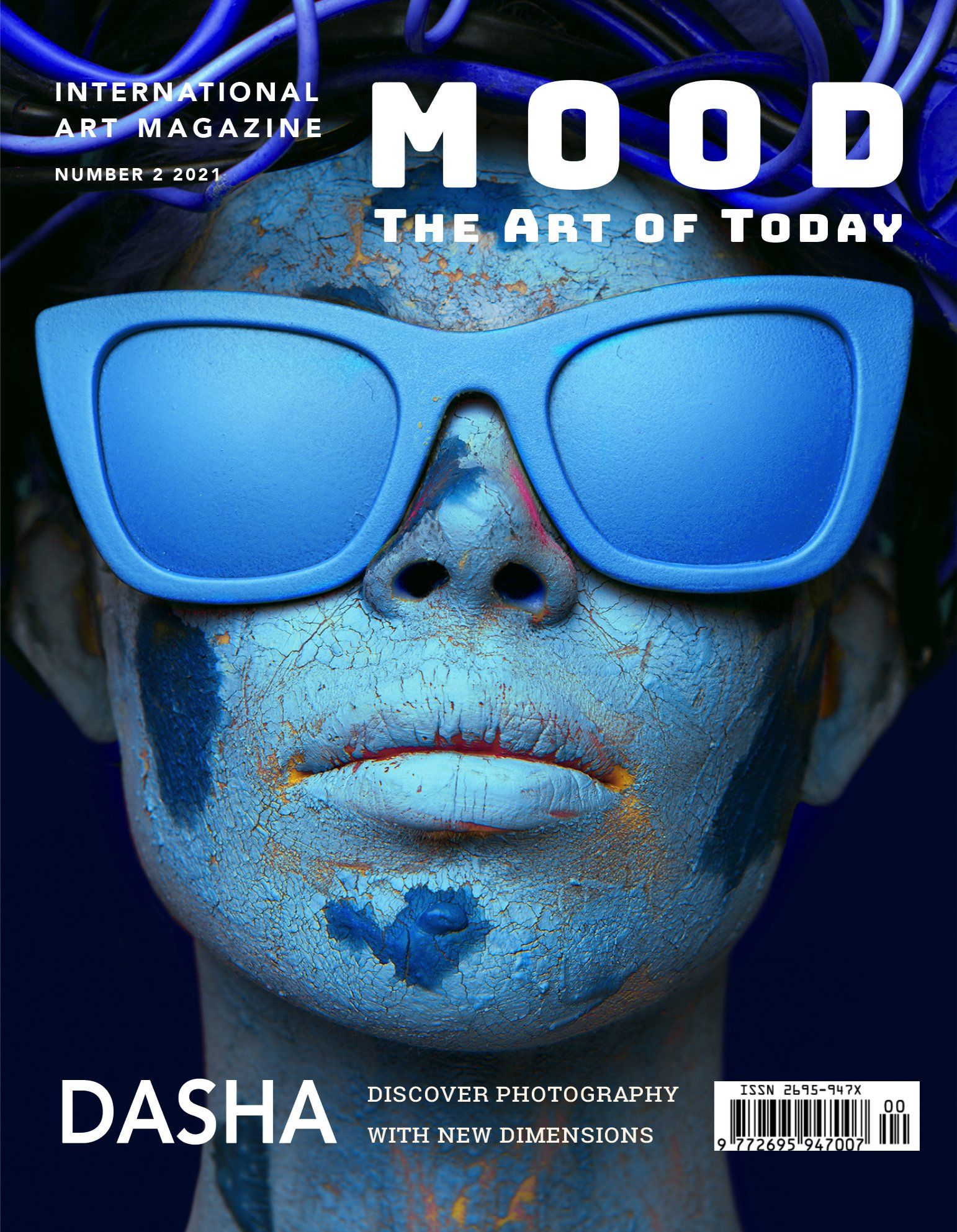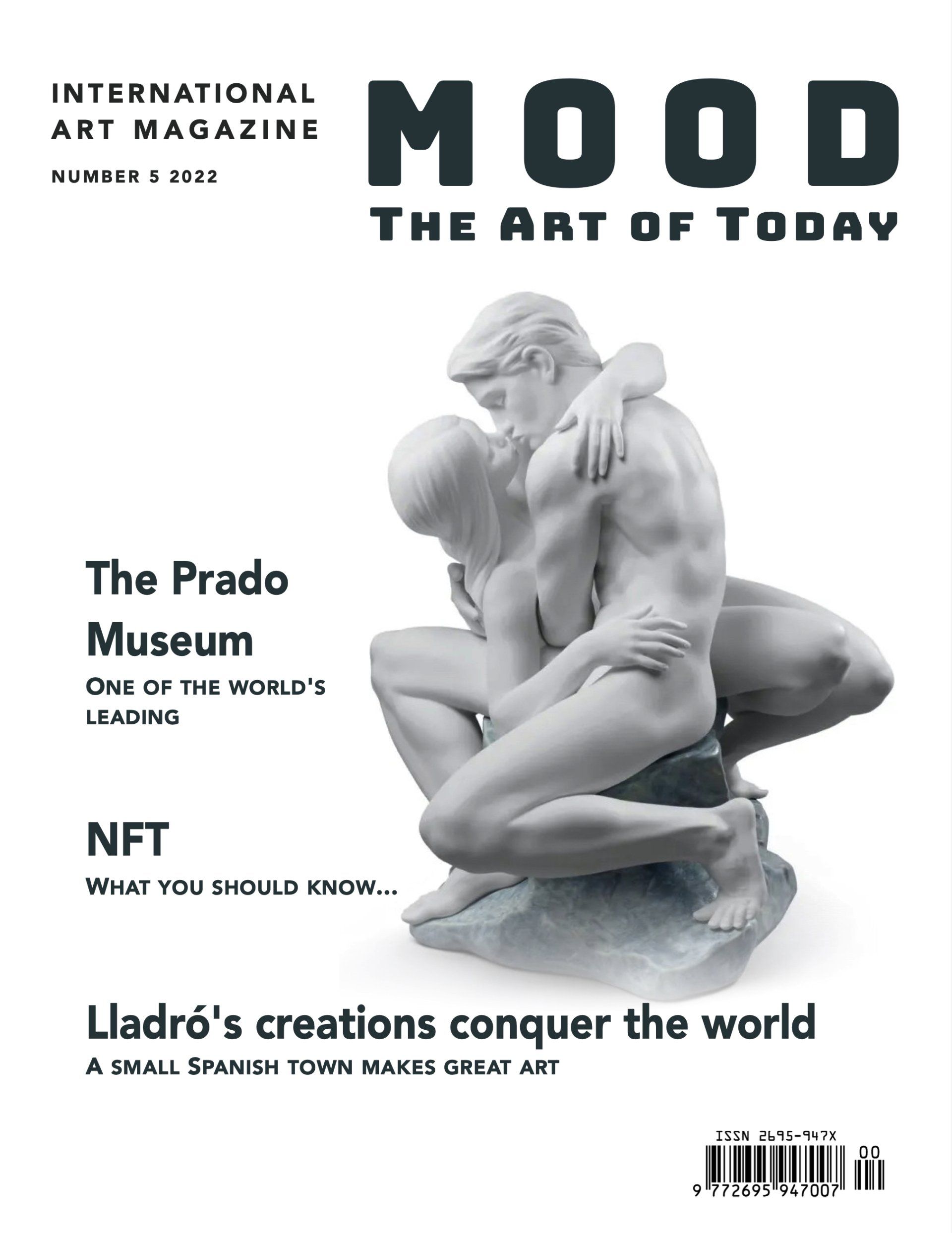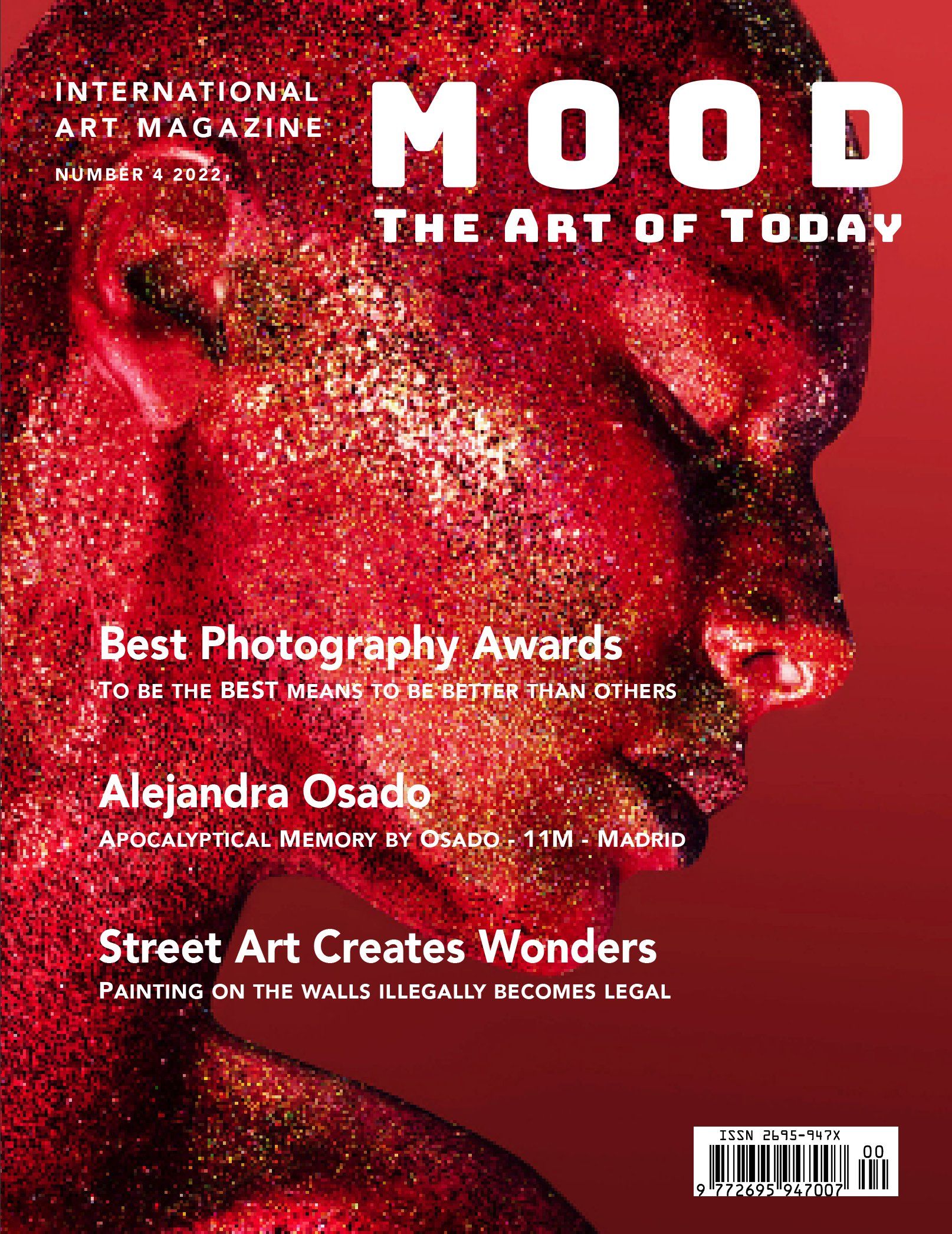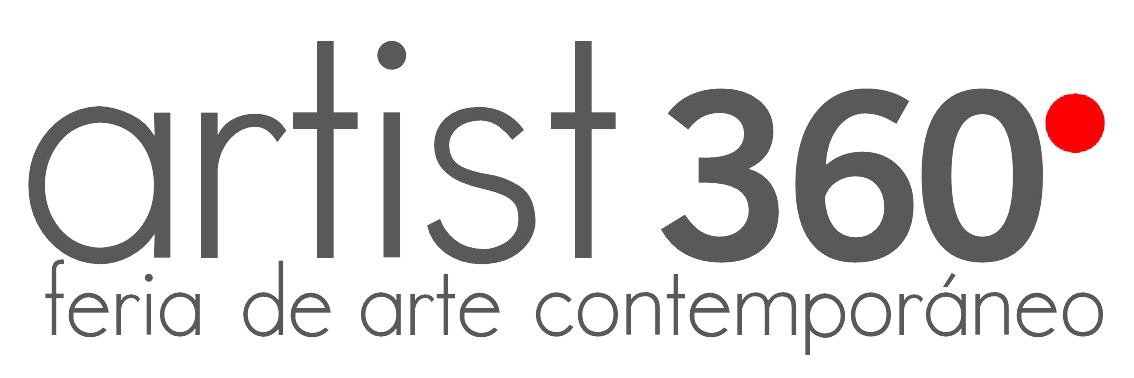ANAT PERL
An Israeli multidisciplinary
artist and entrepreneur
For me art is a necessity, just like eating and drinking, so I don’t
call art a career. Art is a way of life. For as long as I can remember
I have been involved in art in all its forms. From music, through
dance and fine art. Over the years, I have made a living from my
designs; at the same time, I have been involved in other things
such as entrepreneurship, which I still do today. I combine my
occupation in art and design with my other pursuits.
How did you become interested in art?
As I mentioned, this is something I was born with. Art has always been, and will always be, a part of who I am. It is not that I got up one morning and suddenly became interested in art. It’s always been there.
Tell us a little about your life, free time, family and hobbies.
Telling you about my life will take a long time, lol. I cannot be defined in any way, but in general, it could be said that I am an adventurous and that’s
reflected in almost everything in my life and in my art. I am an entrepreneur by birth and currently combine my pursuit of art and design with entrepreneurship in the field of rural development, mainly in Africa and Latin America.
I love to travel the world as a backpacker, getting to know places, people, and other cultures. Over the years, I have formed friendships with people in the places I have travelled to, and we continue to keep in touch and meet somewhere in the world at every opportunity.
Travelling, by the way, has greatly influenced my art. Dancing is an integral part of my life, I love to play drums, and I ride horses whenever I have the opportunity. I’m very fond of photography. It’s one of my greatest hobbies. I love reading books and articles on various topics. I’m crazy about sports and acrobatics. I often meet with my family; I have two brothers and seven cute
nephews.
Do you have an artist in your family?
Of course. We all engage and touch on art, to one way or another. One of my brothers is a very talented product designer and manages large projects in this field. My other brother is engaged in web design, among other things, and he is also a very talented musician. My mother was a violinist and got involved in art as a hobby and my father who has passed away, was engaged in wood-carving as a hobby.
Did you have artistic talent when you were growing up?
Sure. My mother says that even before I could walk, I had already danced. I always sang, I played piano and guitar from a young age, I painted, and I always liked to try different materials and combine them. I have always been involved in creation, from a very young age.
Can you tell us about your career as an artist?
As I mentioned, I do not consider art as a career even though I do make a living from it. I see art more as a way of life, a passion that I can eventually turn into money, too, but that’s not the point. I took my art a few steps further when I developed the ‘Blessing Stones’ brand, about seven years ago.
My biggest thrill is developing and designing models that combine different
materials that are not normally seen combined like concrete and gold.
What is the idea behind the ‘Blessing Stones’ project?
The Blessing Stone mezuzahs are original, unique Judaica art items.
The idea behind the ‘Blessing Stone’ Art Project was to create art that is identified with Israel. It all started with an occasional trip to Jerusalem. As I walked the alleys of the Old City, I felt the stones were telling me a story. This sparked my imagination and I thought of combining the stones with a traditional object found in every home in Israel—the mezuzah. The mezuzah is a clear symbol of the Jewish and Israeli home so it was chosen to be represented in the project.
To begin with, the base material chosen was Jerusalem stone, inspired by the Western Wall in Jerusalem and various stones that characterize the land of Israel, thus strengthening the product’s connection to Israel.
Part of the idea was that anyone who purchased a mezuzah would actually bring into their home a piece from the Holy Land that would provide each entrance with a statement of style, beauty, originality, and a unique artistic taste.
Do you have any other projects underway?
Yes, of course. My next project is to design lighting fixtures. The subject fascinates me. I love the game of light and there is a lot more to do in this area.
Recently, in honour of the opening of Uri Geller’s new museum in Old Jaffa, Israel, I designed a unique mezuzah that represents him. The mezuzah is also a light fixture and is unique—one of a kind in the world. At 30 kg and made of Jerusalem stone, it’s extraordinary in terms of size and design.
I have already been involved in all aspects of design such as fashion, furniture, interior design, and graphic design, but I have not progressed these the way I did with the ‘Blessing Stones’ project.
Hopefully in the near future I would be able to invest more time in the next project. I wish there were more than 24 hours in a day ... lol!
Do you think you have a market outside of Israel?
Most of my market is outside of Israel. So far, I have exhibited my works in prestigious galleries in Israel as well as in a museum in Jerusalem and a high percentage of the buyers were tourists from all over the world. Although the product is an essentially Jewish, historical symbol which goes back thousands of years, a significant portion of the buyers have been from different religions who connected with the product and art from an historical and symbolic perspective, and the place it represents. Almost every society and culture has this kind of ‘gatekeeper’, so I think people all over the world can identify with the mezuzahs.
How do you get inspiration for your artwork?
I was inspired to create the Blessing Stones project by the city of Jerusalem, which is built entirely of stones. These are the same stones I use to create the
mezuzahs. In general, and this is true in everything I design, I can get inspired by simply anything, in most cases nature, and different landscapes, by animals and plants; even dance movements can affect certain contours I design.
Music definitely inspires my work. And of course, works by other artists are definitely inspiring. I am so glad that there are so many artists in the world who are inspired by their works.
What kinds of techniques are your favorites?
The favorite technique is to combine different materials that are not usually seen together like concrete and gold, i.e. materials that are considered as cheap materials like concrete along with precious metals like gold and silver.
Beyond that, I love working with the contrast of textures as well as materials. This is how the Jerusalem stones in the ‘Blessing Stones’ project create a contrast with the metal designs that appear on the stone. The stone is rough and matte while the metal is smooth and shiny. The contrasts I work with are also reflected in the flaws and design: round lines versus straight lines for example.
Can you tell us something about the production process of your works of art?
From the selection of the stones, through their cutting to the processing of the stone, the production process is very long and tedious until the final result is obtained, which is the product itself. The stones go through various processes to be resistant to wind, water, and other hazards, because in many cases, the mezuzahs are hung outside the door. The elements designed from metal should be matched to each and every stone. Since these are natural stones, each stone has its own story, and the fit should be very precise.
Then comes the cutting and processing of the metal parts, their preparation for the coating, and the coating itself.
The part of the glass tube located in the centre of the mezuzah is made by a glass artist in a special blowing technique that is specially designed to match the stone chosen in terms of its colour and texture.
The blessing scroll, visible through the glass tube, is made of handmade paper that has undergone many processes until it has become semi-transparent as it is made of animal skin.
But most important of all and most fun for me is the design phase. I start it with sketches on paper with a pencil and then transfer everything to the computer and continue the design from there.
Each mezuzah is handmade and is one of a kind.
Do you have any education in art?
As I mentioned, from a very young age I have been involved and experienced almost every kind of art, from music and dance to fine arts. I studied visual arts and graphic design in high school and worked as a graphic designer for several years in different places and developed my own language to create and to express myself.
I am a graduate of Bar-Ilan University in the Social Sciences. I also studied musicology there. I continued my exploration of arts in Kenya, where I specialized in music, drumming, and dancing. In Cuba I was a student of the history of Cuban music, which included drumming, percussion, and dancing. Throughout this time, I have always been involved in fine arts.
What do you want to express with your art?
Myself. My soul. My way of seeing things, my expression, and the connection between the past and the present.
What do art critics say about your works?
When my art works was displayed in the museums and prestigious galleries in Israel, I won much praise from great artists and art critics of all kinds, especially for originality, design, and the combination of unconventional materials.
What do you want to express with your art?
Myself. My soul. My way of seeing things, the connection between the past and the present.
What do art critics say about your works?
When my art works was displayed in the museums and prestigious galleries in Israel, I won much praise from great artists and art critics of all kinds, especially for originality, design, and the combination of unconventional materials.
How do you see your future as an artist?
Art is a world in its entirety, and I intend to continue my journey in this fascinating world, breaking my boundaries, and perhaps even combining all the fields of art in which I am engaged.


